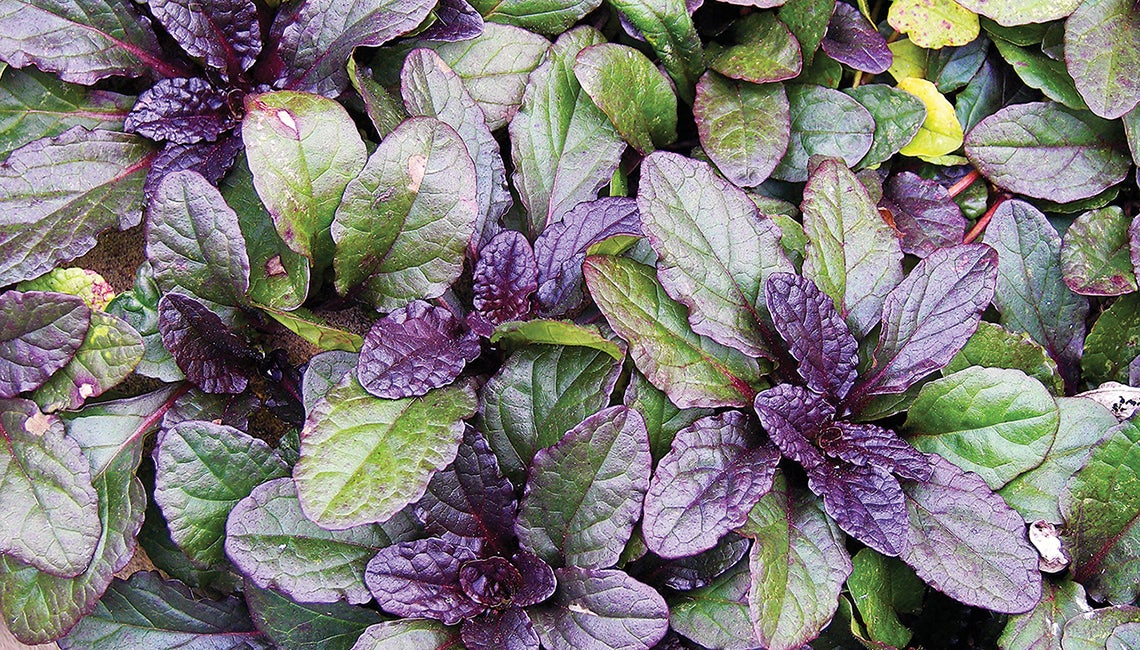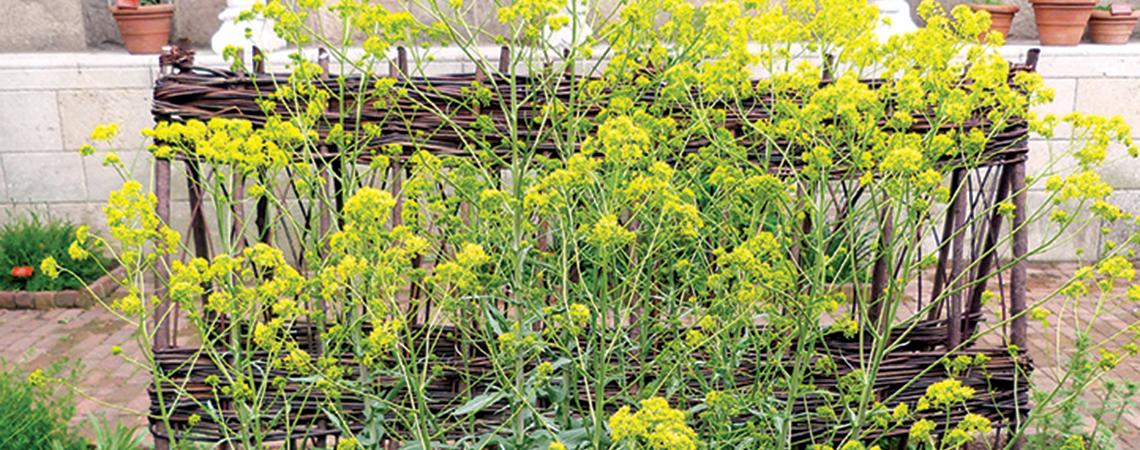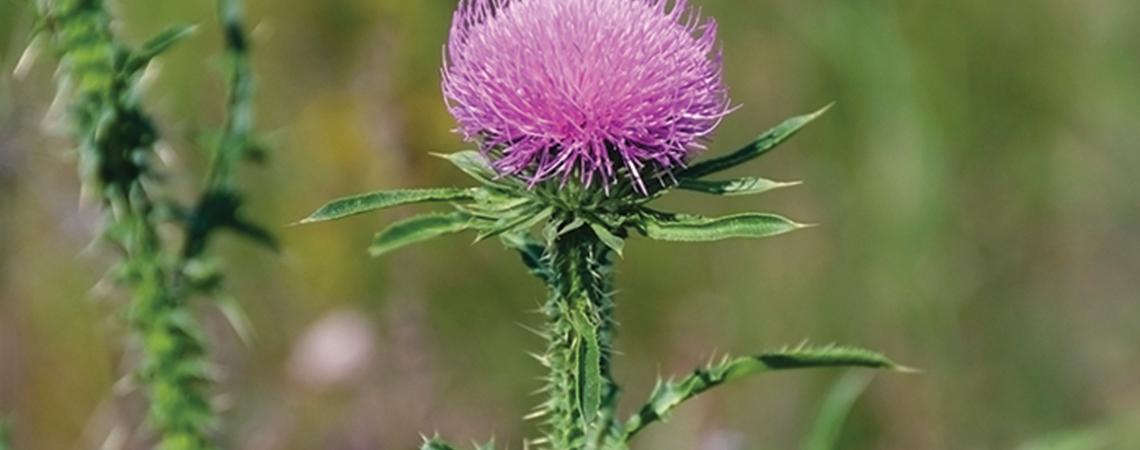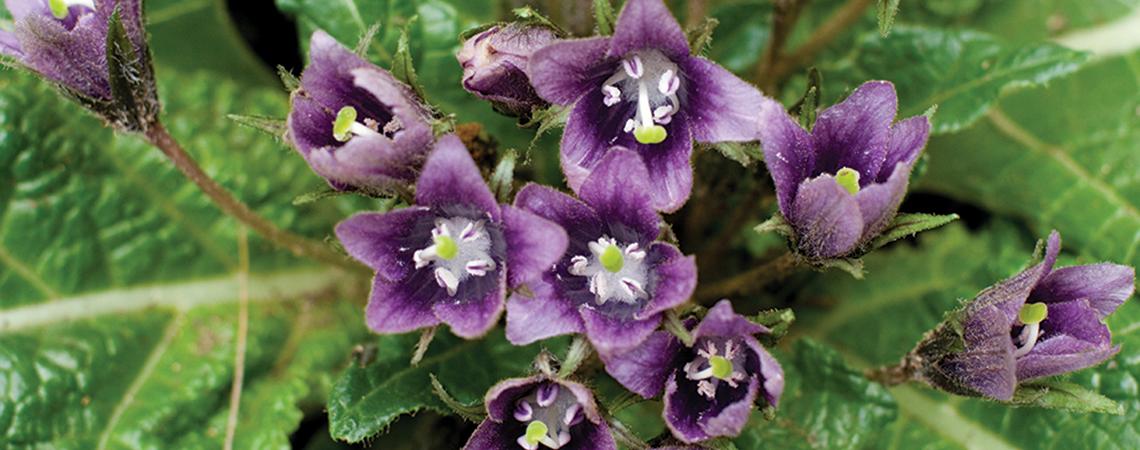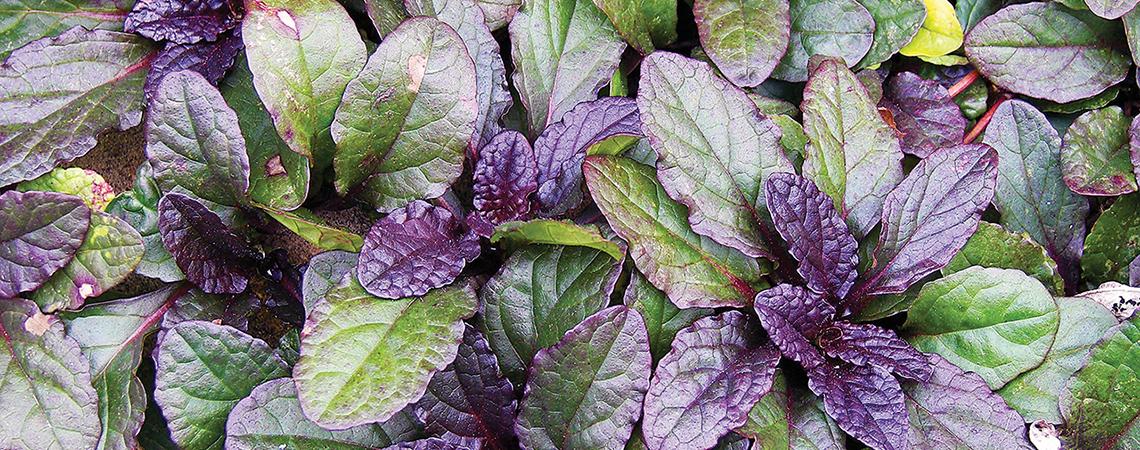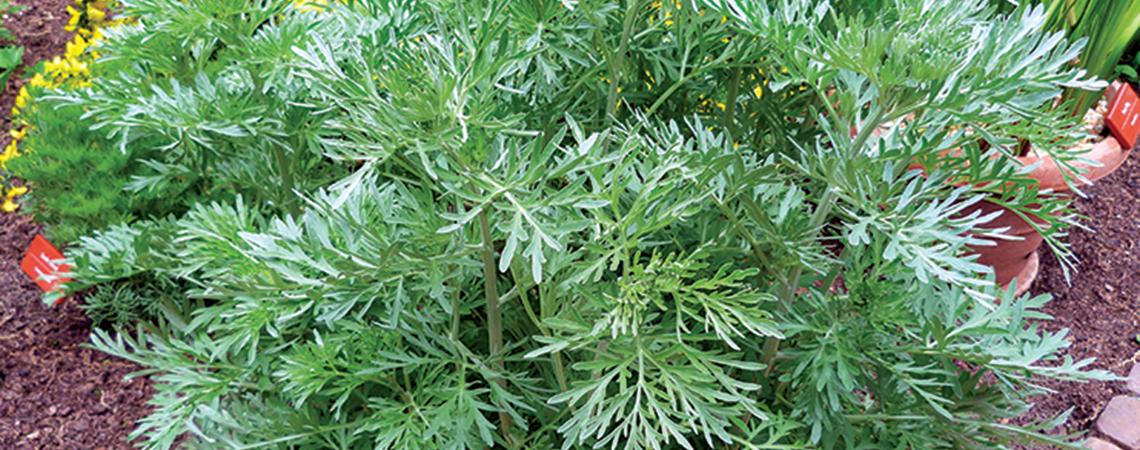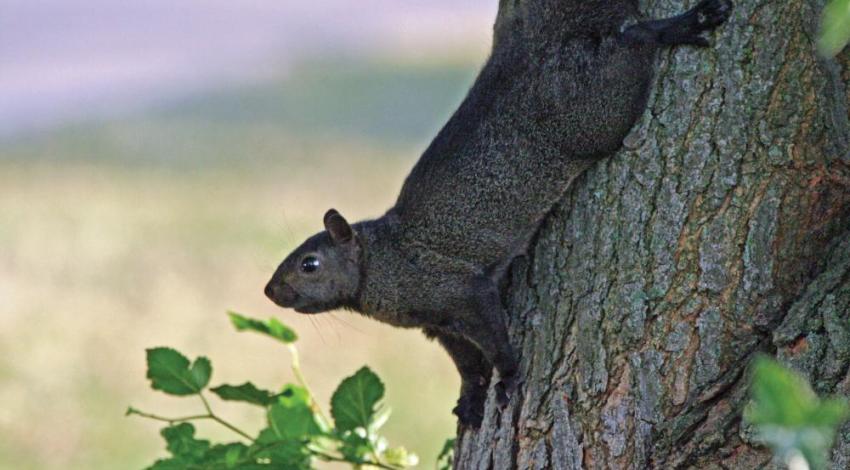If you were to imagine a garden in A.D. 800, you might picture unusual and long-extinct plants, but in fact, gardens of the medieval period (or Middle Ages) were filled with plants that have thrived for centuries and still grow in our gardens today. Many once had names with religious overtones but now have modern, more familiar monikers. For example, cornflower was called Mary’s crown and foxglove was called Virgin’s glove.
What medieval plants might be in your garden? How about hollyhock (St. Joseph’s staff), basil (Holy Communion platter), dill (devil-away), or daffodil (Mary’s star)? You’re probably already familiar with those common plants and herbs, but there are plenty more that you can find to give your garden a medieval flair.
Woad
Absinthe, or wormwood, is from the Artemesia family and is a lovely accent to a modern garden. Absinthe was called Mary’s tree and was used as a spice herb as well as for medicinal purposes, such as stomach disorders or nausea, and to repel insects from the vegetable garden, but is known mainly for the alcoholic beverage that is made from it. Absinthe can be grown from seeds sown directly in the ground or planted from potted plants in light, well-drained soil in full sun.
Though not exactly as portrayed in the Harry Potter series, mandrake, or love apple, is an interesting and attractive plant with a colorful history of having magical properties. Its medicinal use in the Middle Ages was for the treatment of rheumatic pain and for melancholy and mania. It is seldom prescribed in modern herbal medicine, due to the highly toxic alkaloids in the root. To grow mandrake, sow seeds in the fall. Young plants must be well watered through the season.
Milk thistle is a beautiful plant known as St. Mary’s thistle in medieval times. Thistles are weeds, but this variety has been valued for medicinal uses for more than 2,000 years; it is the most researched plant for the treatment of liver disease. This plant’s deep green leaves are veined with white, and the flower is dark red/purple, making it an attractive addition to a garden. Be aware that it is not native to North America and can overtake a property with the seeds from a single plant.
Woad is a member of the mustard family and has long been prized for the dark blue/black fruit from which blue dye was made centuries ago — and still is used today by heritage crafters. Woad was also cultivated as a medicinal, used to heal wounds and jaundice. It’s an attractive biennial plant for the back of the flower bed, as it grows 3 to 4 feet tall. It thrives in most soils and light exposure.
Thine additional options include:
- Ajuga, or bugleweed (St. Lawrence plant)
- Chamomile
- Fennel (Our Lady’s fennel)
- Lady’s mantle (Mary’s mantle)
- Rosemary (Mary’s bouquet)
- St. John’s wort
- Yarrow (Our Lord’s back)
- Snapdragon (Infant Jesus’ shoes)
- Borage (Virgin’s face)
- Lavender (Mary’s drying plant)
- Grape hyacinth (church steeples)
- Sweet violet (Our Lady’s modesty)
